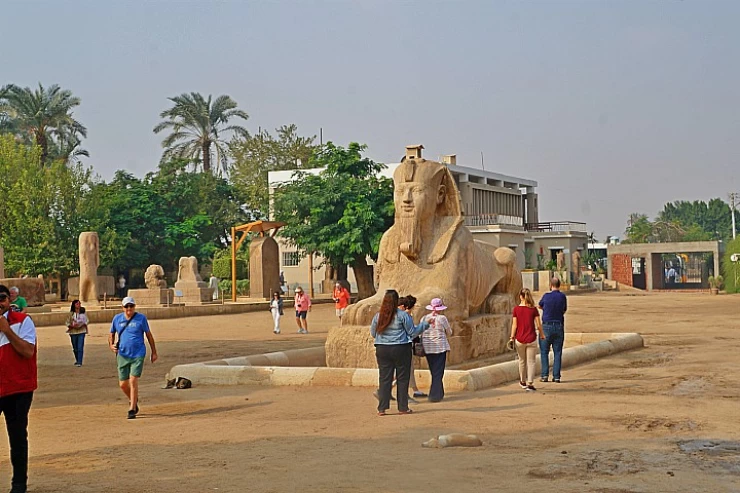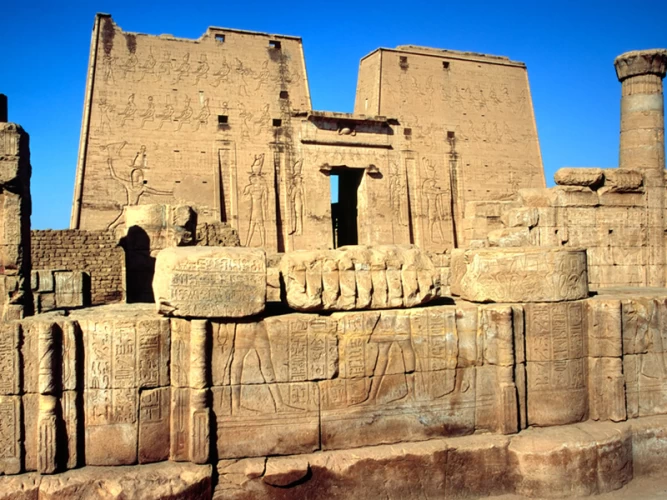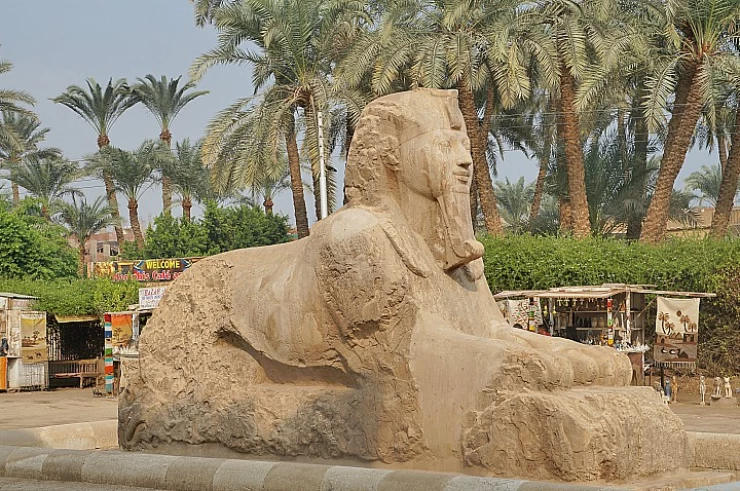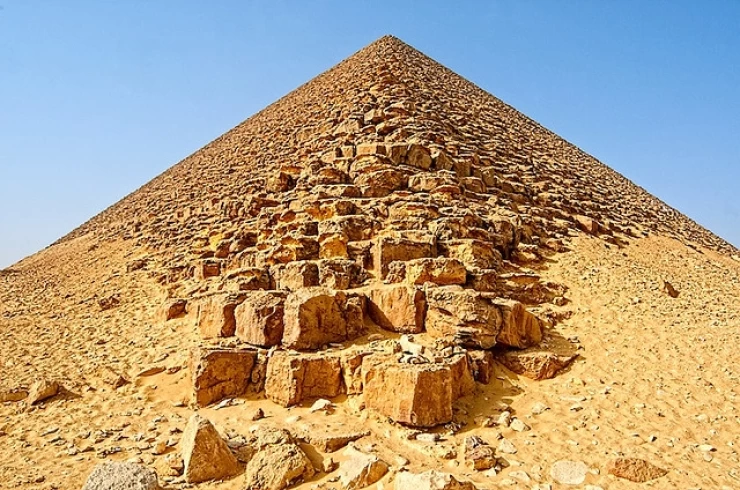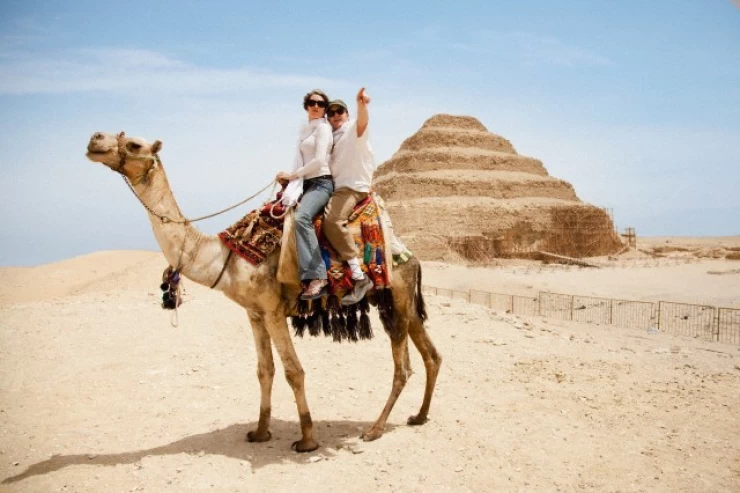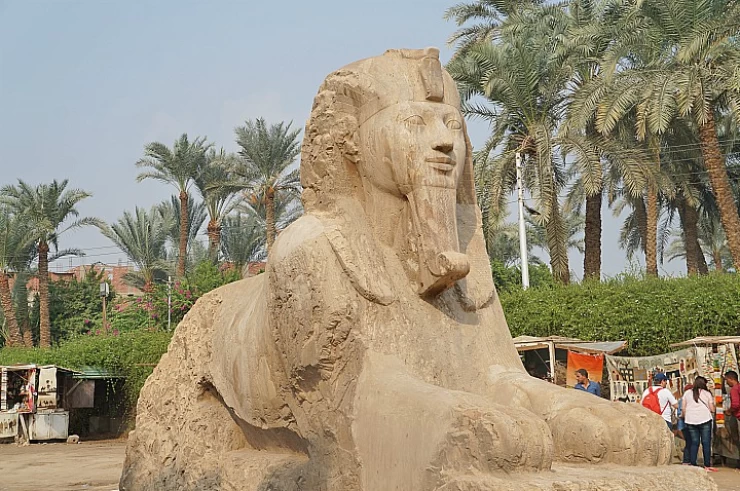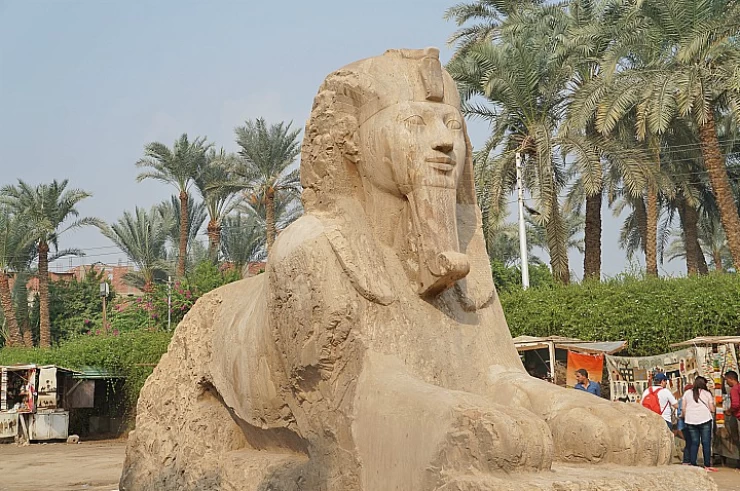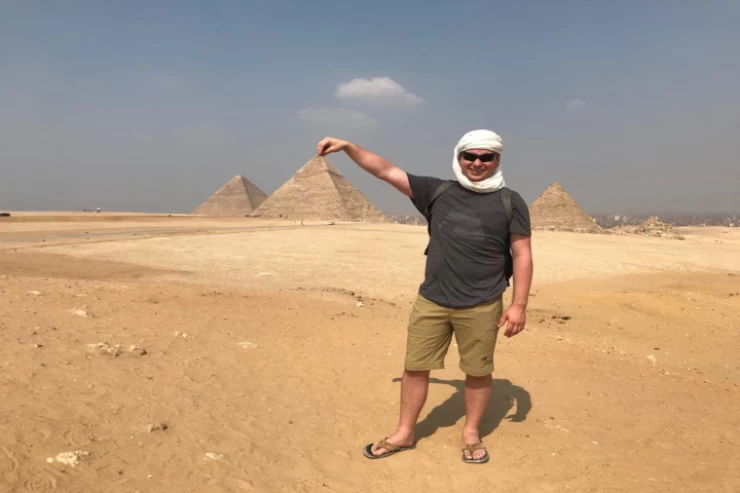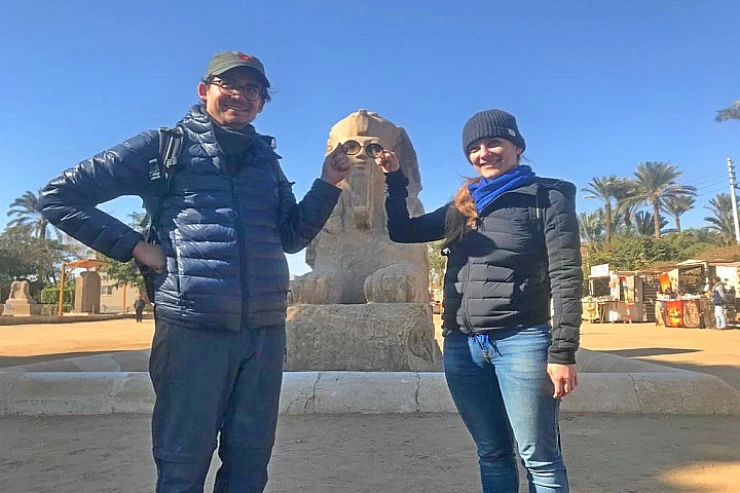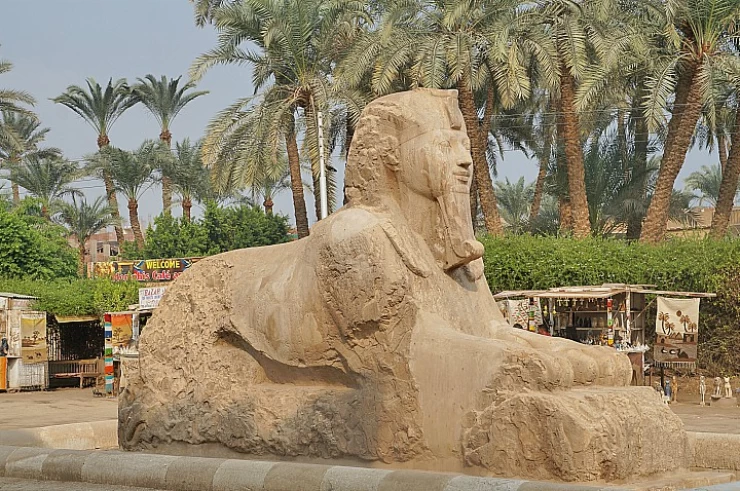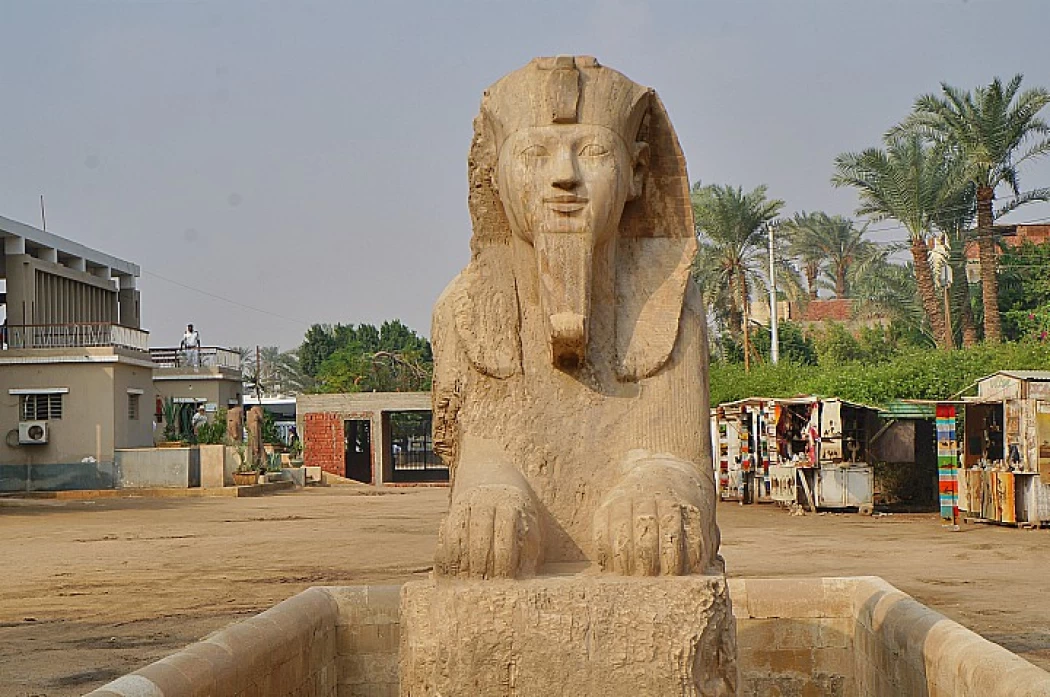
The Alabaster Sphinx of Memphis
Information About Memphis's Alabaster Sphinx
After excavating a large number of sites, including Tanis, Naucratis, Hawara, Arsinoe, Illahun, Meydum, Amarna, Koptos, Nagada, Thebes, Denderah and Giza, William Matthew Flinders Petrie arrived at ancient Memphis - Mit Rahineh - in 1908.
Together with his assistant, British archaeologist Ernest John Henri MacKay - who had been working alongside him since 1907 - he made some fine discoveries in the temple precincts of Ptah until 1913.
Located south of Cairo, “Memphis was the city of the god Ptah, with whom Sekhmet and Nefertoum were associated from the New Kingdom onwards. The city, known as the historic "White Wall," served as the nation's capital during the Old Kingdom and acted as a crucial administrative center for the whole of the Double Country's history (Isabelle Franco).
Today, the site reveals little of its former grandeur, but you can imagine what the Egyptologists found: a palm grove, mostly flooded, in which blocks or vestiges of stone emerge.
a single block was used to create an alabaster statue that was modeled like the Sphinx. At 4 meters high and 7 meters long, the Sphinx weighs 80 tons. It is believed to have been carved during the 18th dynasty, during the reign of Hatshepsut, approximately in the 15th century BC, based on its features and the intricacies of the carving. A local was preparing the ground for the foundation of his new home while excavating in the vicinity (people here build their own houses).
While digging, he came across a mass of stone. He continued digging, but an official from the Egyptian antiquities department happened to be passing by. He found that this naive man had completely hammered the right-hand side of this sphinx. That's why you can see the left side of this sphinx in good condition, while the right side is hammered.
Latest Articles
Admin
Aswan Governerate in Egypt
One of Egypt's southern governorates is Aswan Governorate. The city of Aswan serves as its capital. At a latitude of 22 north of the equator (also known as the Tropic of Cancer), it is bounded to the north by the Qena Governorate, to the east by the Red Sea Governorate, to the west by the New Valley Governorate, and to the south by the Republic of Sudan.
Admin
Luxor Governorate Egypt
The capital of the Arab Republic of Egypt is Luxor City, which was once known as "Thebes City" because it served as Egypt's capital during the Pharaonic era. It is situated in the South Upper Egypt region, approximately 670 kilometers from the capital Cairo from the south. It is bordered on the north by Qena Governorate, on the south by Aswan Governorate, on the east by Red Sea Governorate, and on the west by New Valley Governorate.
Admin
History of kafr El Sheikh Governorate
Kafr El Sheikh Governorate is an Egyptian governorate, located in the northernmost part of Egypt in the Nile Delta, with Kafr El Sheikh as its capital. It had a population of 3,172,753 in 2015 and an area of 3,748 km². Its entire area is located north of the delta and overlooks the Mediterranean Sea. The main economic activity of the residents of the governorate is agriculture and fishing, especially the southern lands of the governorate and the lands overlooking the Nile River - Rosetta Branch.
Admin
Egypt's New Administrative Capital
The New Administrative Capital is located between the Cairo-Suez and Cairo-Ain Sokhna roads, 60 km from Cairo and the same distance from Ain Sokhna and Suez. The New Administrative Capital is located on the border of Badr City, in the area between the Cairo-Suez and Cairo-Ain Sokhna roads, just after New Cairo, Mostakbal City and Madinaty.
Admin
Al Gharbia Governorate
Gharbia Governorate is one of the governorates full of archaeological sites, whether they are places or facilities (mosques, churches), as the governorate is a destination for visitors to these places throughout the year, whether they are Egyptians from the different governorates.
Admin
Hamata Islands (Qulaan Archipelago) in Marsa Alam
The Hamata area, south of Marsa Alam in the Red Sea, is one of the most important parts of the Wadi El Gemal Reserve, whether in the desert or the sea. It was named after the sorrel plant, which was distorted to Hamata.






